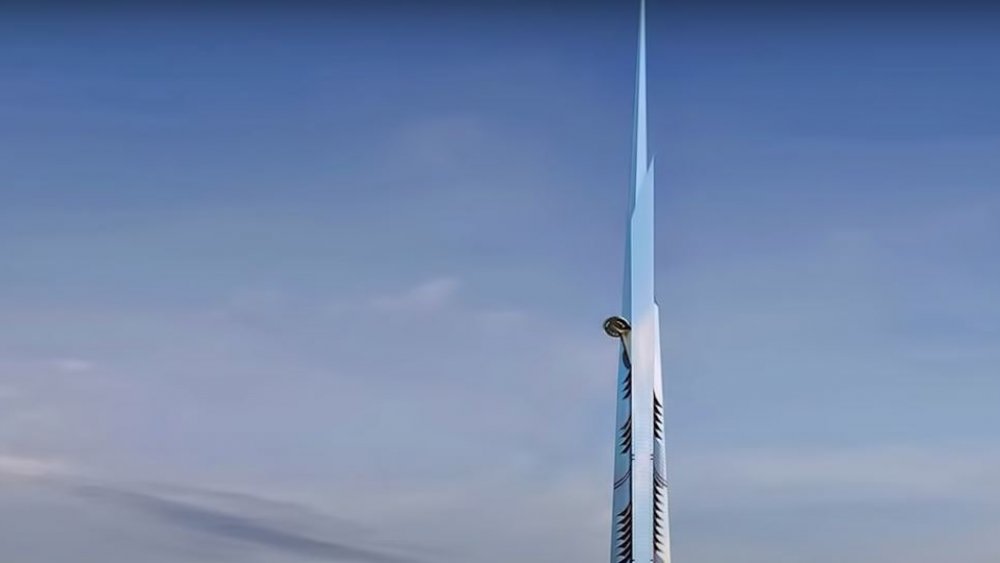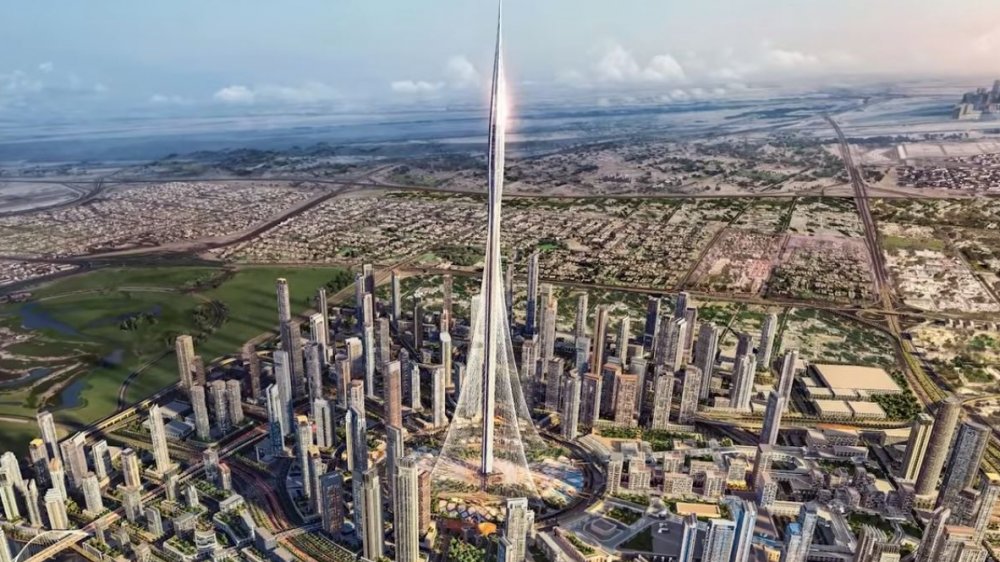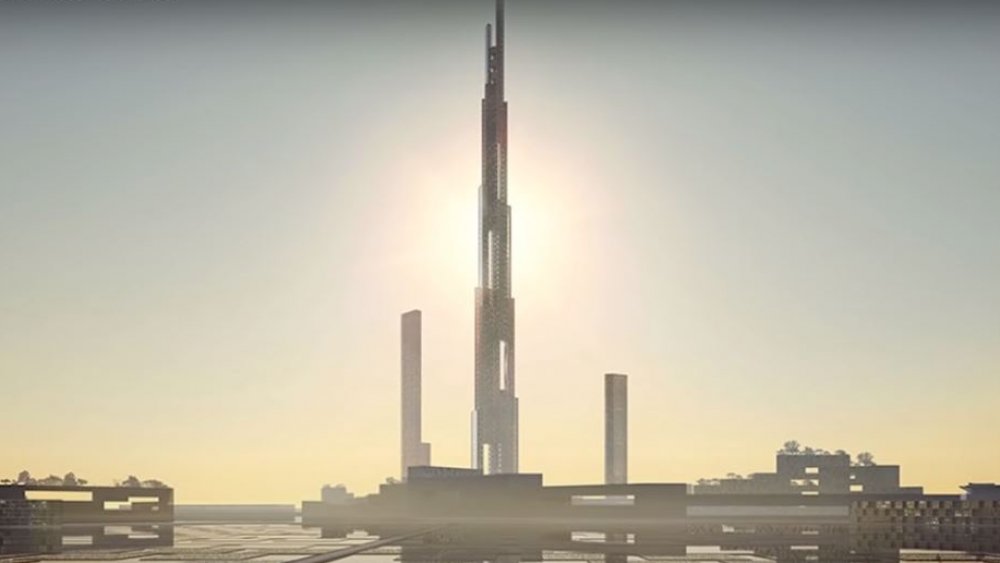These Will Be The Tallest Buildings Of The Future
The Great Pyramid at Giza. The Empire State Building, in New York City. The Petronas Towers in Kuala Lumpur. Taipei 101 in Taipei. At some point in time, these buildings have been the tallest man-made structures on Earth. Recent history has seen an explosion of countries and architectural firms competing against each other for who could reach closest to the sky. Whether it's simple competition and human ego, a deep-seated desire to strive towards an unattainable realm of sky and space, or an expression of the desire to escape from a fractured planet, the result has packed Earth's surface with rearing monoliths that keep getting taller and taller.
At present, the Burj Khalifa in Dubai, completed in 2010, holds the record for tallest building, at a whopping 828 meters, as reported by the Skyscraper Center database. It also has the greatest number usable floors, at 163, and cost $1.5 billion to build, as recorded on the Telegraph. It makes sense that at this point in history, technology and wealth have combined to allow for the construction of such staggering structures, but even so, the cost of the Burj Kahlifa is relatively small. In comparison, New York's One World Trade Center cost $3.8 billion, while the enormous clock tower at Mecca, Abraj Al Bait, cost $15 billion.
But even these dramatic testaments to wealth and ambition will pale in comparison to some of the structures in the works for the future.
Towering testaments to wealth, inventiveness, and pride
The nearest of these upcoming projects is Jeddah Tower in Saudi Arabia, a 1000-meter tall building scheduled to be completed by 2022, as stated by CNN, but which will likely be delayed by COVID-19. Jeddah Tower isn't just a building, however: it will be the center of an entire cityscape, planned to outstrip Dubai by 2030, and diversify Saudi economy. Dubai, of course, not to be outdone, is planning the needle-like, artistically-shaped Creek Tower, designed by renowned architect Santiago Calatrava. Inspired by the shape of minarets, it's set to be a staggering 1,300 meters tall, and contain apartments and skygardens affording 360-views of Dubai, as stated on Top Luxury.
After this, things start to get truly crazy. Burj Mubarak-al-Kabir is poised to be the 1001-meter tall hub of "Silk City," an engineered city in Kuwait (named after the Middle Eastern collection of folk tales, 1001 Arabian Nights). Costing $132 billion, and planned to be finished by 2030, it will have 234 floors accessible by double and triple-decker elevators, and 30 discrete "skyhoods" of apartments and workplaces connected by 4-story town squares. The nearby area is planned to have an airport, nature reserve, Olympic stadium, 36-km-long bridge connecting it to Kuwait city, and create 450,000 jobs.
Cloudscrapers, not skyscrapers
Moving further into the future, the world's tallest buildings will start to look more like visions from science fiction.
Take Japan's Sky Mile Tower, a 1700-meter government initiative in Tokyo Bay to respond to overcrowding, create an environmentally-sustainable, self-contained city, and shield Tokyo from extreme weather, rising sea levels, and tsunamis. The proposed tower is the nucleus of an entire new city district, built in the bay, full of walled, hexagonal neighborhoods meant to break waves. Other innovations include urban farming areas, atmospheric water absorption, and horizontal elevators. At present, though, this is hypothetical, and the 2045 completion date is meant to inspire architects and engineers.
Finally, Times Squared 3015 is an absolutely bonkers, 1733-meter-tall (over a mile high) self-contained, vertical city. It would contain, in addition to the obvious apartments and offices, a mountain range, beaches, stadium, and a Redwood forest. Times Squared 2015 would be split into zones and attached modules, accessible via elevators. A stack of "L" shaped living spaces on the southern face would be meant to catch sunlight, for power generation purposes.
Even more startlingly, there are visions of tall future buildings that include structures like space elevators, linking Earth and the Moon, as described by MIT Technology Review. Even though such structures are technologically feasible, they are further off than something like Jeddah Tower. Regardless, you can count on humanity — for better or worse — to continue challenging itself through architectural feats, and pushing boundaries along the way.


